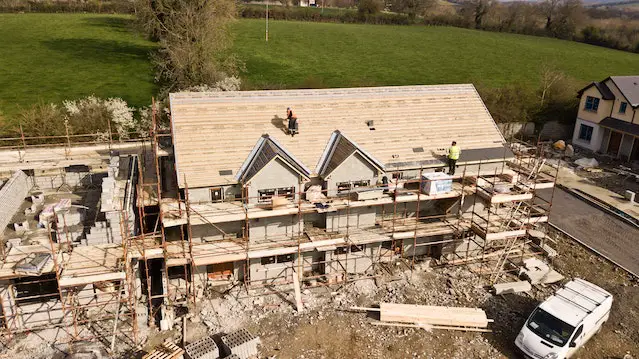Neighbour and property disputes can be a significant source of stress and frustration for homeowners in the UK. From noise disturbances to boundary disputes, there are numerous issues that can arise between neighbours, and the impact on quality of life can be significant. However, there are many laws in place to help address neighbour and property disputes and provide resolution for those affected.
In this blog post, I will provide a glossary of the relevant law and legislation in the UK that apply to neighbour and property disputes.
I hope that this guide will serve as a useful resource if you are dealing with neighbour dispute and are seeking guidance on what law may be relevant to your particular dispute.
Laws related to neighbour and property disputes:
- Access to Neighbouring Land Act 1992 – Provides measures to enable people to carry out essential maintenance and repairs on neighbouring properties.
- Anti-Social Behaviour, Crime and Policing Act 2014 – Provides measures to address issues related to anti-social behaviour, which can be relevant in cases where neighbour disputes involve issues related to harassment, intimidation, or other forms of anti-social behaviour.
- Clean Neighbourhoods and Environment Act 2005 – Provides measures to address issues related to littering, fly-tipping, and dog fouling, which can be relevant in cases where neighbour disputes involve issues related to cleanliness or hygiene.
- Common Law – Refers to the body of law that is based on judicial decisions and customary practices, and can be relevant to disputes involving property boundaries, nuisance, and other issues.
- Consumer Protection Act 1987 – Provides measures to protect consumers from faulty or dangerous products, which can be relevant in cases where neighbour disputes involve issues with construction or renovation work.
- Crime and Disorder Act 1998 – provides local authorities with powers to tackle anti-social behaviour, including neighbour disputes, through measures such as Anti-Social Behaviour Orders (ASBOs).
- Dangerous Dogs Act 1991 – Prohibits the ownership, breeding, sale, and exchange of certain types of dogs that are considered to be dangerous to the public.
- Defamation Act 2013 – Provides measures to protect individuals from defamatory statements, which can be relevant in cases where neighbour disputes involve allegations of misconduct.
- Environmental Protection Act 1990 – Provides measures to address issues related to noise, air pollution, and other environmental nuisances that may arise from neighbour disputes.
- Equality Act 2010 – Provides measures to protect individuals from discrimination, which can be relevant in cases where neighbour disputes involve issues related to protected characteristics.
- Freedom of Information Act 2000 – Gives individuals the right to access information held by public authorities.
- High Hedges (Appeals) (England) Regulations 2005– Provides measures to address issues related to appeals related to high hedges, which can be relevant in cases where neighbour disputes involve issues related to height and privacy.
- Housing Act 1985 – Provides measures to address issues related to the condition and management of housing, including those arising from neighbour disputes.
- Housing Act 1988 – Provides measures to address issues related to the rights and responsibilities of landlords and tenants, which can be relevant in cases where neighbour disputes involve rented properties.
- Housing Act 2004 – Provides measures to regulate the condition and safety of rental properties, which can be relevant in cases where neighbour disputes involve issues related to rental properties or landlords.
- Housing Health and Safety Rating System (HHSRS) – Provides measures to assess the safety and condition of housing, which can be relevant in cases where neighbour disputes involve issues related to housing conditions.
- Human Rights Act 1998 – incorporates the European Convention on Human Rights into UK law, which can be invoked in neighbour disputes if one party’s actions infringe upon another’s rights, such as the right to peaceful enjoyment of their home.
- Landlord and Tenant Act 1985 – Provides measures to address issues related to the relationship between landlords and tenants, which can be relevant in cases where neighbour disputes involve rented properties.
- Localism Act 2011 – Provides measures to give local communities more power and control over local decision-making, which can be relevant in cases where neighbour disputes involve local planning and development decisions.
- Neighbourhood Planning (General) Regulations 2012 – Provides measures to enable communities to prepare and implement neighbourhood plans, which can be relevant in cases where neighbour disputes involve local planning and development decisions.
- Noise Act 1996 – Provides measures to address issues related to noise pollution, which can be relevant in cases where neighbour disputes involve issues related to noise levels or disturbances.
- Noise and Statutory Nuisance Act 1993 – Provides measures to address issues related to noise and other nuisances that may arise from neighbour disputes.
- Occupiers Liability Act 1957 – Provides measures to address issues related to the liability of occupiers of properties, which can be relevant in cases where neighbour disputes involve issues related to property hazards or risks.
- Party Wall etc. Act 1996 – Provides measures to address issues related to party walls, party structures, and excavations, which can be relevant in cases where neighbour disputes involve shared walls or boundary structures.
- Planning and Compensation Act 1991 – Provides measures to address issues related to planning and compensation for losses incurred due to planning decisions, which can be relevant in cases where neighbour disputes involve local planning and development decisions.
- Planning (Listed Buildings and Conservation Areas) Act 1990 – Provides measures to protect historic buildings and conservation areas, which can be relevant in cases where neighbour disputes involve issues related to historic preservation or conservation.
- Private Nuisance – Refers to the common law tort of private nuisance, which can be relevant in cases where neighbour disputes involve issues related to noise, odours, or other disturbances.
- Protection from Harassment Act 1997 – Provides measures to address issues related to harassment, which can be relevant in cases where neighbour disputes involve issues related to harassment or stalking.
- Public Nuisance – Refers to the common law tort of public nuisance, which can be relevant in cases where neighbour disputes involve issues that affect the wider community.
- Town and Country Planning Act 1990 – Provides measures to address issues related to planning and development, which can be relevant in cases where neighbour disputes involve proposed construction or renovation work.
- Wildlife and Countryside Act 1981 – Provides measures to protect wildlife and habitats, which can be relevant in cases where neighbour disputes involve damage to wildlife or habitats.
All of the legislation listed above can be read in full on https://www.legislation.gov.uk/

Conclusion
In conclusion, neighbour and property disputes can be a challenging and emotional experience for homeowners, and it’s important to understand the relevant law that can help address these issues. If your dispute is complex or your neighbour is refusing to communicate, it may be the time to instruct a solicitor. I have an article that discusses the process of instructing a neighbour dispute solicitor that might be helpful.
By being informed about the various measures in place, homeowners can take steps to protect themselves and their property, and seek resolution for any disputes that may arise. I hope that this list of the law relating to neighbour and property disputes will serve as a helpful resource if you are navigating a neighbour disputes and seeking resolution.





Leave a Reply